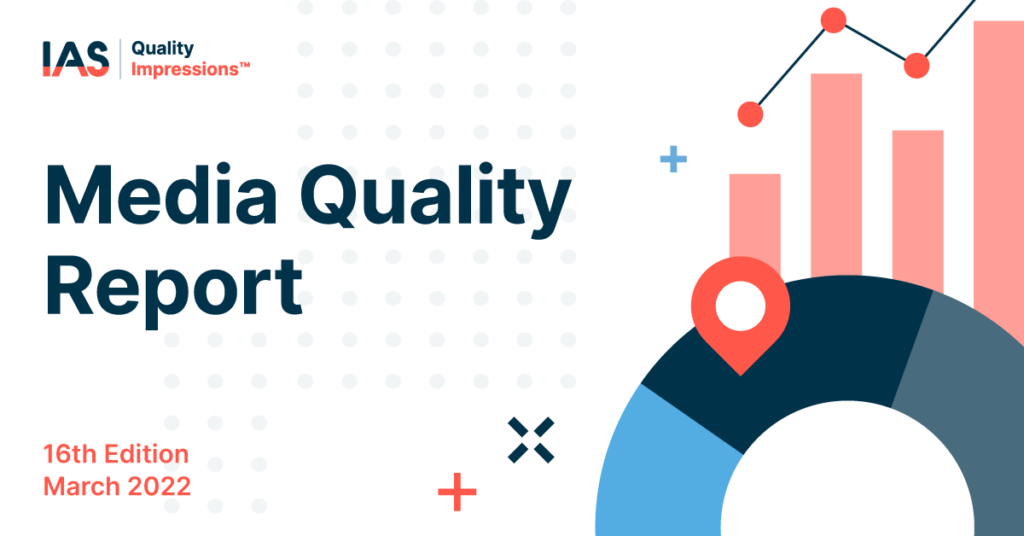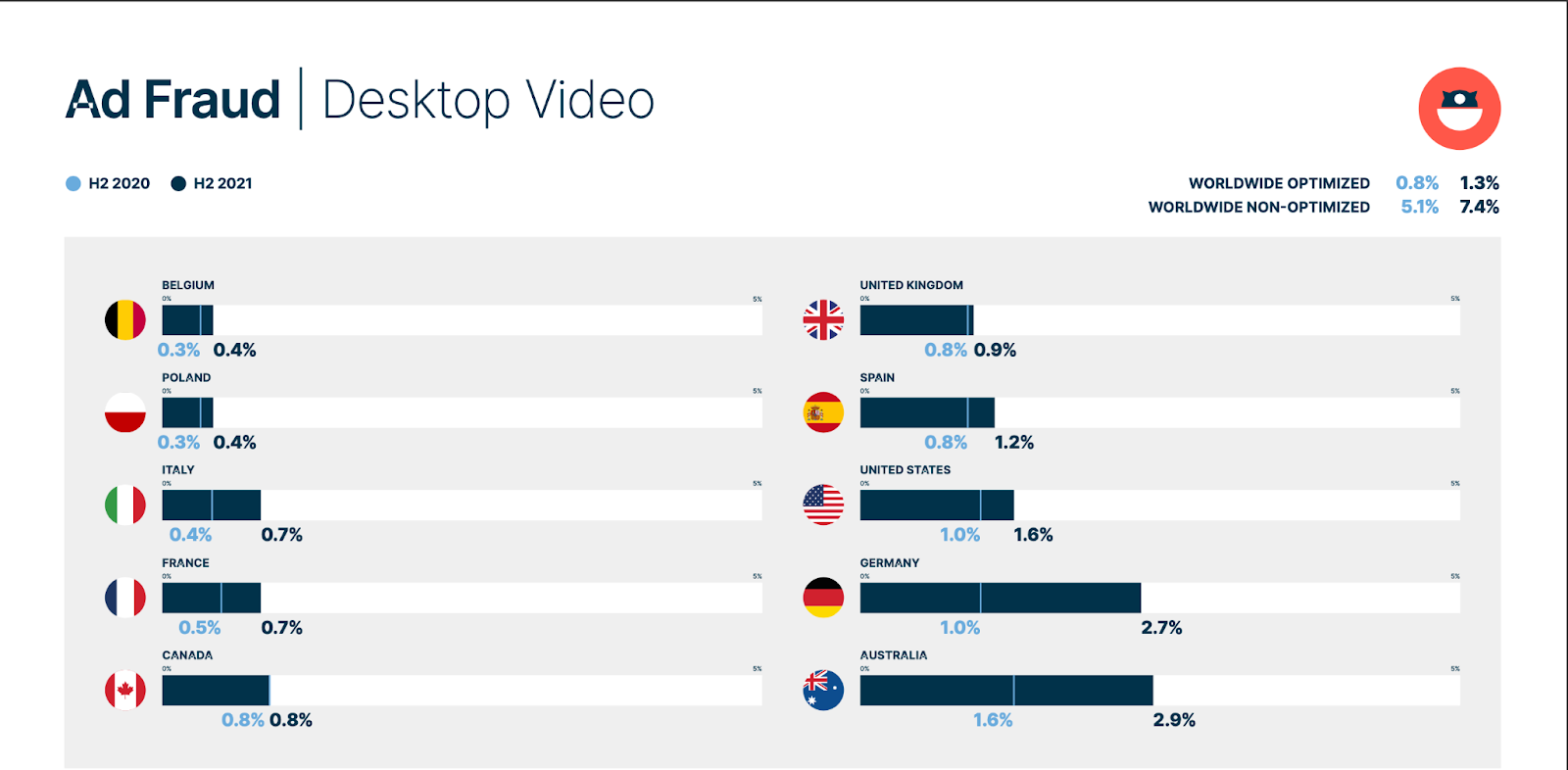Australian Digital Advertisers Experience High Viewability and Low Brand Risk Across All Buying According to the Latest IAS Media Quality Report

The latest Media Quality Report provides global benchmarks for viewability, brand safety, and ad fraud across digital environments and channels.
SYDNEY, 31 March 2022: Today, Integral Ad Science (Nasdaq: IAS), a global leader in digital media quality, released the sixteenth edition of the Media Quality Report, providing transparency into the performance and quality of Australian digital media, alongside global comparisons.
Key insights from the report include:
Australia has the highest mobile web display viewability rate globally; desktop video viewability touches the 80% mark for the first time.
Viewability rates in Australia rose across all environments. Mobile web display remained one of the most viewable formats globally, reporting a 73.0% viewability rate in H2 2021, increasing 4.2 percentage points (pp), while the worldwide viewability rate reached 65.6%. Mobile web video viewability rates were at 77.4%, a whopping increase of 10.4pp year-on-year (YoY). Mobile app display viewability rose to 77.4%, slightly below the worldwide average of 77.6%. The rise in viewability rates on mobile environments is likely supported by the growing adoption of the IAB Tech Lab’s Open Measurement Software Development Kit (OM SDK). The viewability rates for desktop video touched the 80% mark for the first time ever (80.6%) with the desktop display at 72.4%

Australia has the highest desktop video ad fraud rates globally.
While desktop video became one of the most viable formats in Australia (80.6%), it also witnessed an increase in ad fraud rates, which saw an optimised against-ad fraud rate of 2.9%. In comparison, the worldwide average remained at 1.3%. Desktop display ad fraud rates in Australia were 1.4%, with ad-fraud rates on mobile web display and mobile web video at 0.4%.

Brand risk decreased across channels.
IAS measures brand risk global as the portion of pages scored by IAS as medium or higher risk to brands. Brand risk rates dipped to historically low levels in H2 2021. This shift was powered by the growing adoption of sophisticated contextual solutions, increasing privacy regulations, and the positive impact contextual alignment brings to the consumer advertising experience.
Desktop display registered one of Australia’s lowest brand risk levels (0.7%), while the worldwide average remained at 1.4%. Australia had the second-lowest brand risk on desktop video globally (0.8%), down from 3.6% YoY. Mobile web display reported 1.0% brand risk levels, down from 4.2% YoY, and mobile web video at 1.2%, down 3.4pp YoY.
Jessica Miles, Country Manager ANZ at Integral Ad Science, said, “Marketers are considering safety and suitability as they adapt to the changing environment. Privacy compliant, contextual targeting, and avoidance, which incorporate sentiment, are deployed to drive audience engagement in high-quality environments. We can see this impact in the significant drop in brand risk across all media buying types. Brand risk is a critical metric to consider and can directly impact brand equity.” She continues, “Conversely, we have seen an increase in ad fraud across video, and it comes as no surprise, as the video has grown 47.8% year-on-year, according to the IAB OAER, December 2021 Report. Programmatic media quality targeting facilitates buying quality impressions while reducing wastage, a key strategy marketers can deploy to combat the increasing fraud levels across the video. As we emerge from the past year’s challenges and with the huge shift to programmatic, there is a greater focus on efficiency. As marketers, we’ve learned that minimising wastage by reducing brand risk and ad fraud, coupled with deploying advanced, privacy-compliant targeting strategies like Contextual Targeting is a viable solution for driving efficiencies, engagement, and ROI.”
Integral Ad Science’s Media Quality Report – 16th Edition highlights brand safety, ad fraud, and viewability trends across display, video, mobile web, and in-app advertising. It analysed billions of global data events from ad campaigns that ran between 1st July to 31st December 2021. You can view the full report here
About Integral Ad Science:
Integral Ad Science (IAS) is a global leader in digital media quality. IAS makes every impression count, ensuring that ads are viewable by real people in safe and suitable environments, activating contextual targeting, and driving supply path optimization. Our mission is to be the global benchmark for trust and transparency in digital media quality for the world’s leading brands, publishers, and platforms. We do this through data-driven technologies with actionable real-time signals and insight. Founded in 2009 and headquartered in New York, IAS works with thousands of top advertisers and premium publishers worldwide. For more information, visit integralads.com.